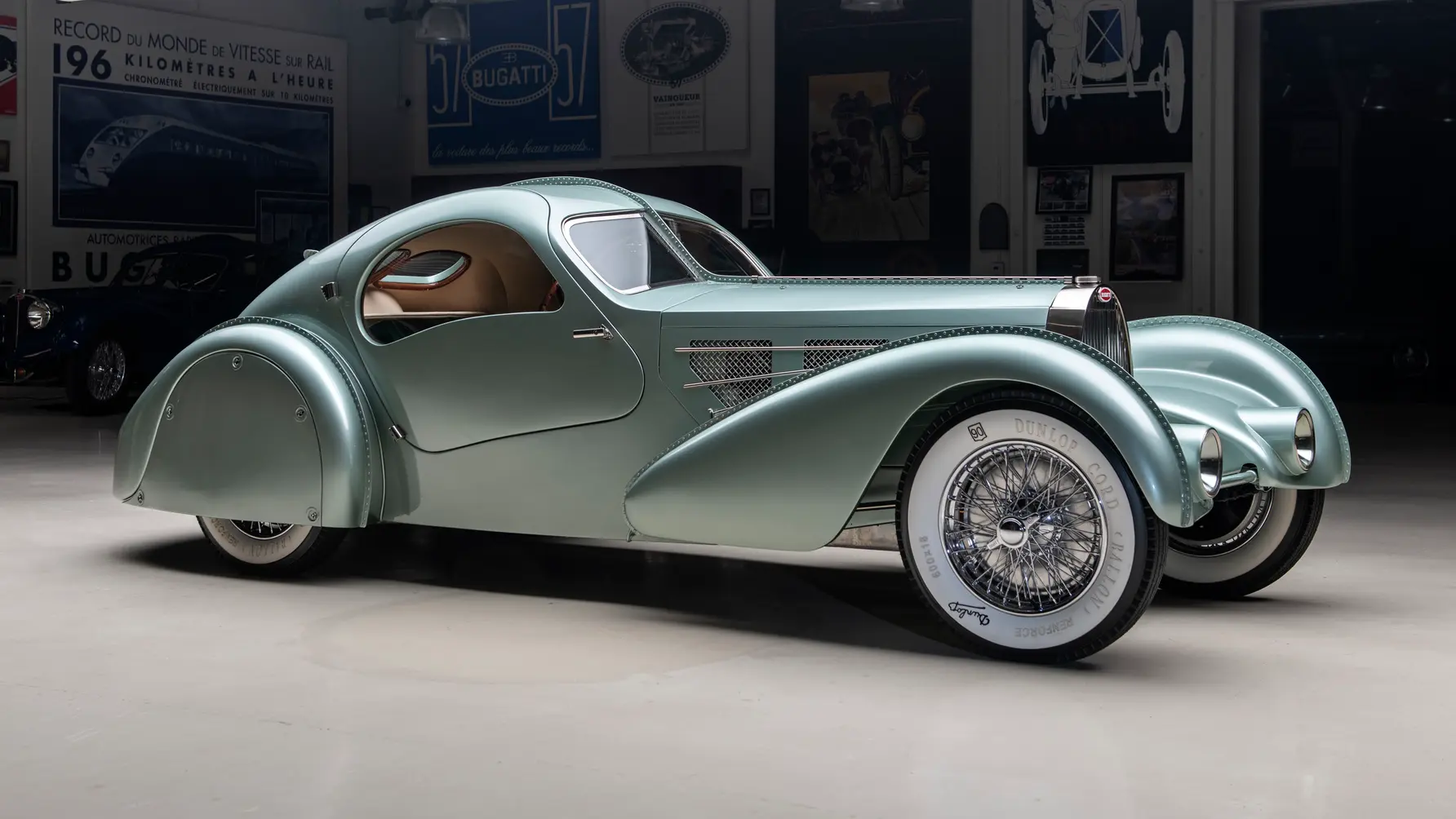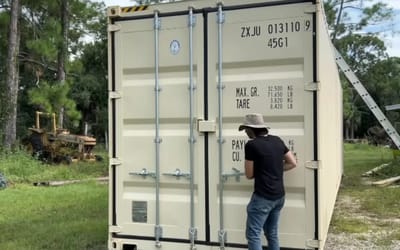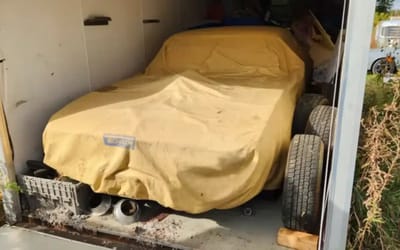Team rebuilds one-of-a-kind Bugatti that vanished 87 years ago
Published on Oct 20, 2023 at 3:04 PM (UTC+4)
by Amelia Jean Hershman-Jones
Last updated on Oct 30, 2023 at 6:56 PM (UTC+4)
Edited by
Amelia Jean Hershman-Jones
One of the greatest mysteries of the motoring world, a-one-of-a-kind Bugatti Aerolithe disappeared in 1936 – and it’s finally been recreated.
The original made its first public appearance at the 1935 Earl’s Court Motor Show in the UK.
It completed one road test in 1936, but was panned at the same year’s Paris Motor Show and was never sold by the factory.
READ MORE! Watch the Tesla Model S Plaid take on the Bugatti Divo in drag race for the ages
If the original were found today, it would be worth $100-150 million.
Most likely destroyed for materials during the war, all that was left were blueprints of the brake pedal and radiator grill and 11 photos.
Despite a seemingly lost cause, classic-car fanatic David Grainger – owner of The Guild of Automotive Restorers – decided to rebuild it in 2012.
The team based in Bradford, Ontario, Canada had the photographs digitized, with every minute detail scrutinized by the motor historians.
“This couldn’t just be a ‘looks like the Aerolithe’, it had to be an absolute recreation of the Aerolithe,” Grainger said to Ridiculous Rides.
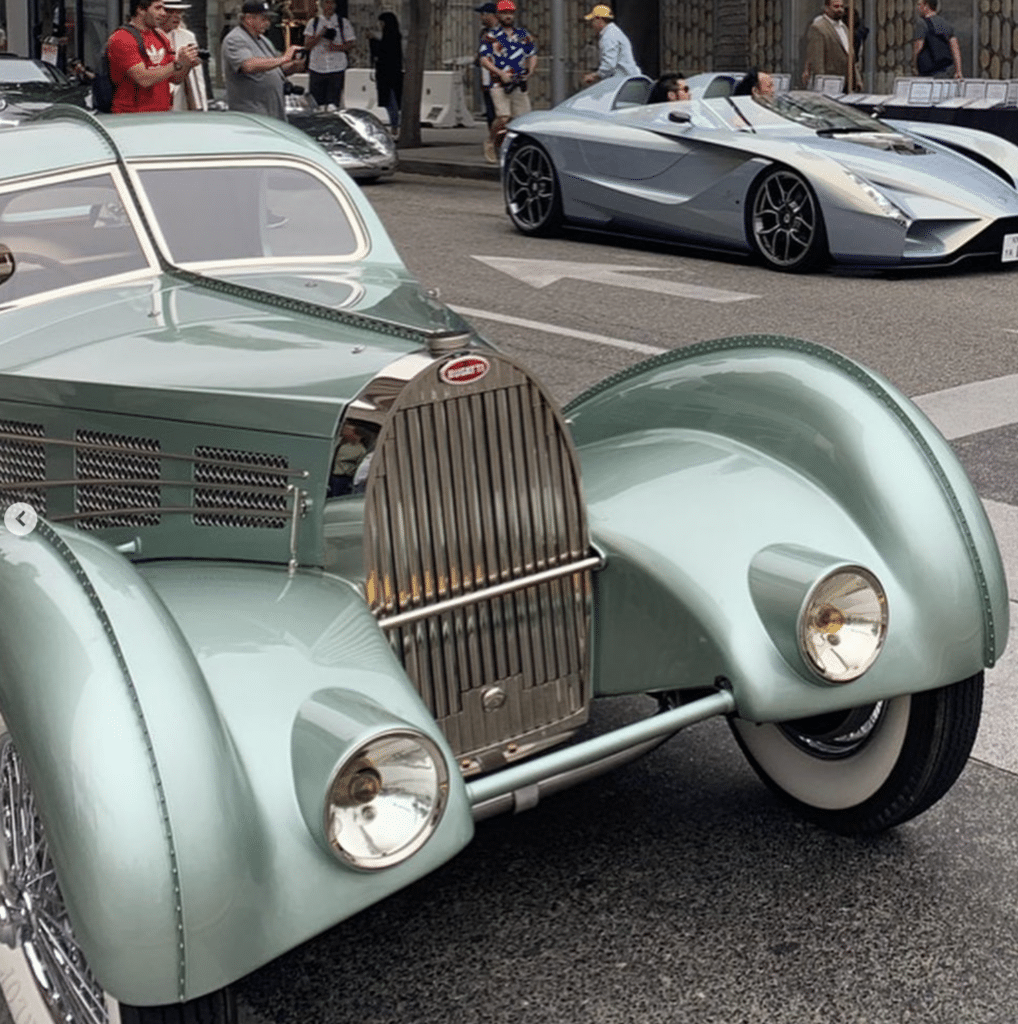
After months of work and much trial and error, the team was able to re-establish the precise dimensions of the original vintage car.
That, combined with the blueprints, allowed them to calculate the dimensions of the car to the nearest millimeter.
Grainger, as a restoration veteran, had a modified Bugatti Type 57 chassis (number 57104) complete with engine and running gear.
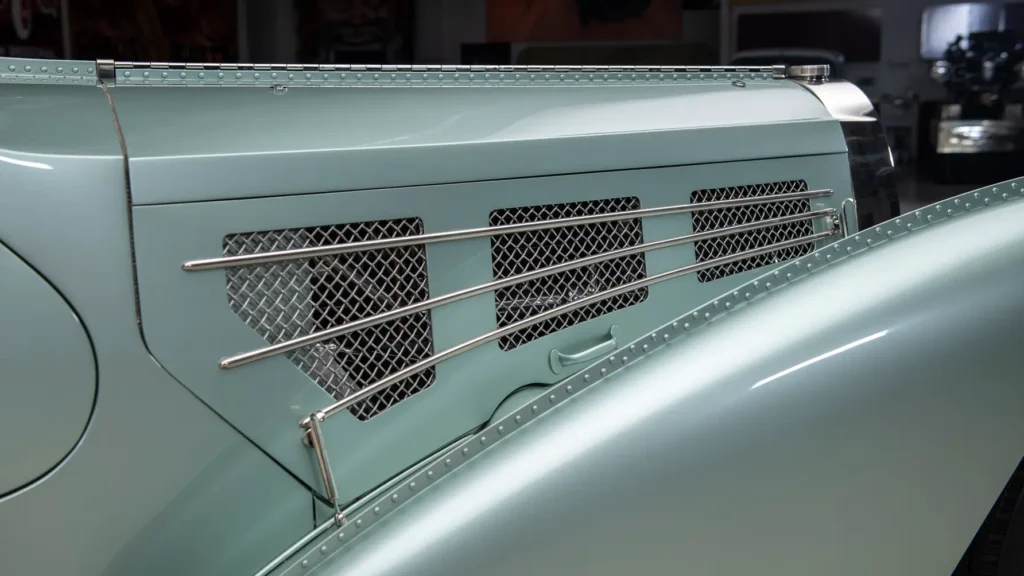
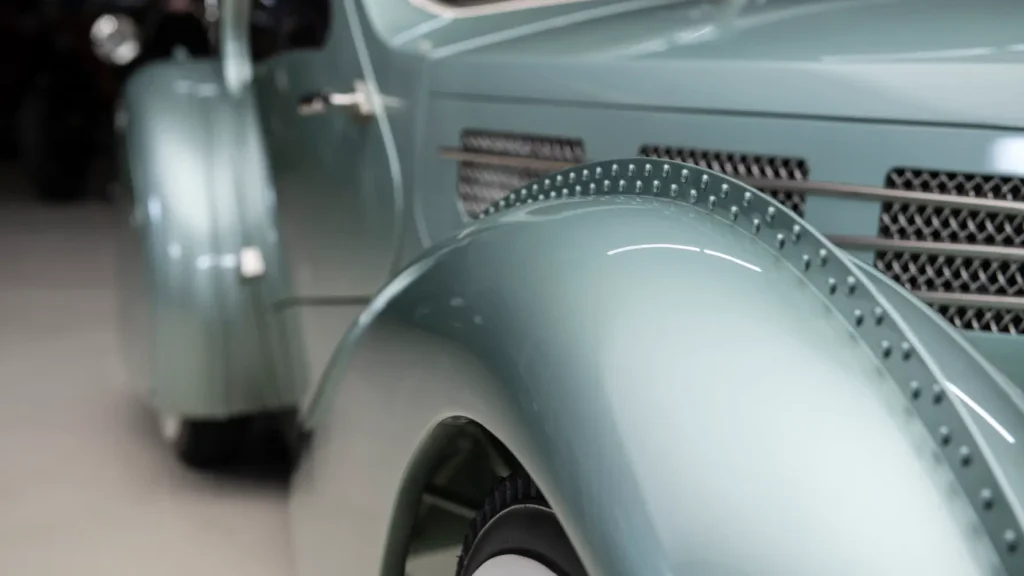
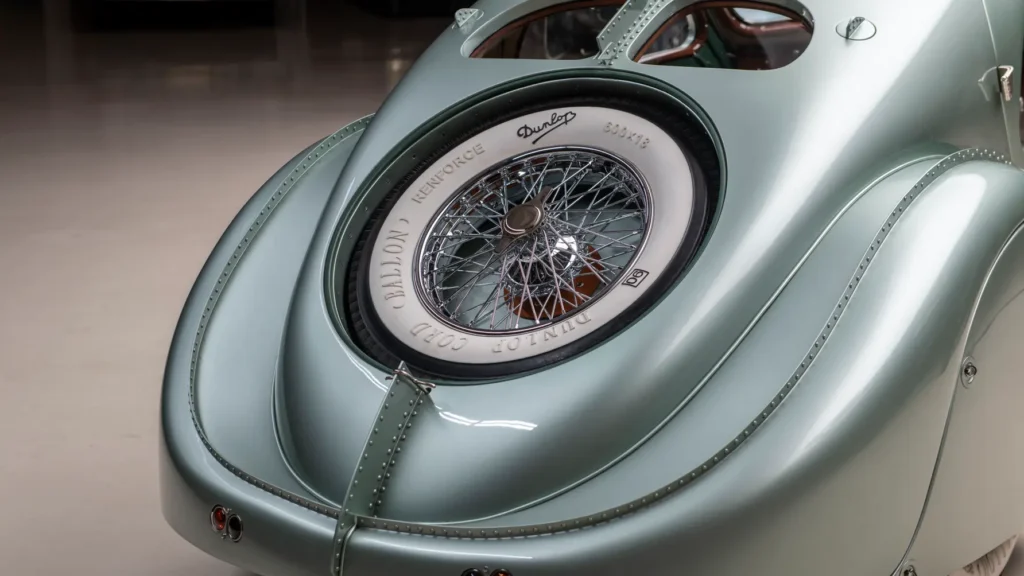
Then on top of that framework, using a period-correct alloy of magnesium – just like the team did in the 1930s – they sculpted the body.
The alloy was far more brittle than modern mixes.
This meant strips of the flammable alloy had to be heated to 800-900 degrees to make it malleable.
Magnesium has a combustion point of 1,140 degrees, and Grainger admits that fires weren’t uncommon.
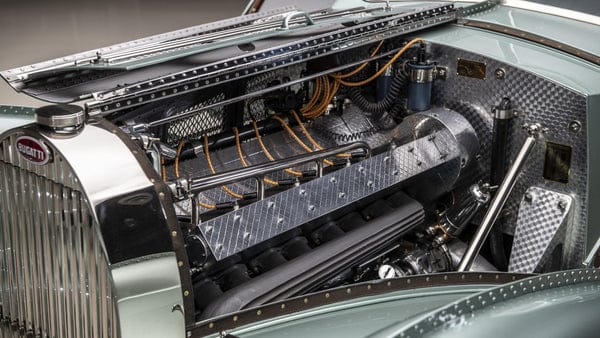
“We did have fires – it was just part of it,” Grainger said.
It was then riveted rather than welded together to make the complex art-deco body’s curves.
Despite costing $3,000 each and 15 of them being needed, the magnesium sheets were key.
Because they’re so light, they were able to increase the Bugatti Aerolithe’s top speed.
Inspired by a leaping cat, its curved haunches and long nose give the impression of motion even when the car’s not moving.
Later appearing on the luxury car brand’s Atlantic models, the prominent center spine helped stiffen the car’s magnesium-alloy body panels.
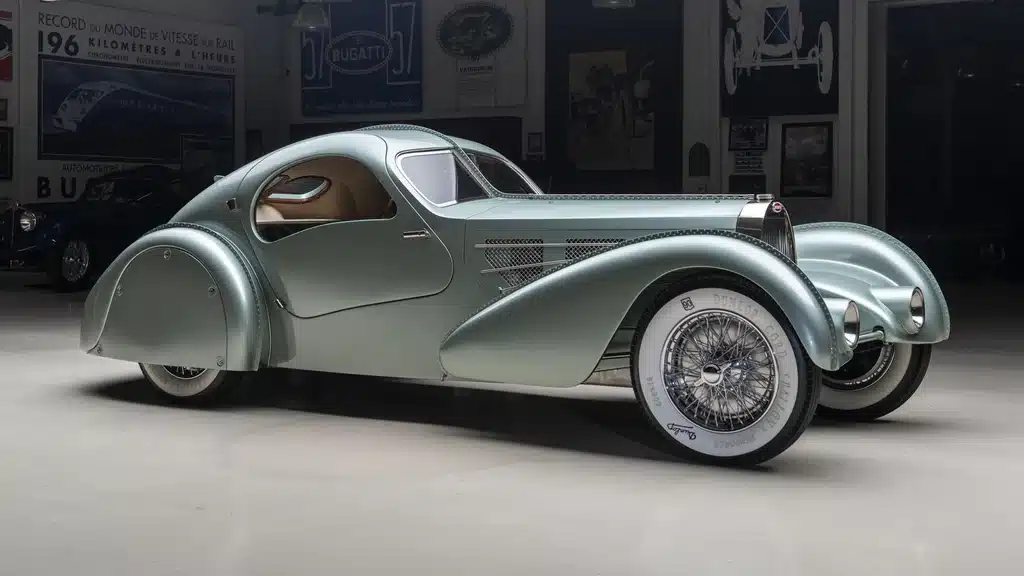
Color was also a mystery, as the photos they had were in black and white.
However, using a painting of the car and comparing it to Bugatti colors from the period, the original shade was identified.
Its tires were a legal as well as practical challenge.
The white-walled Dunlop tires they could see in photos of the Bugatti Aerolithe at its only show appearance are no longer being made.
That meant the dedicated team needed to rebuild identical versions after negotiating trademarks with Dunlop.
Identical to the interior of a classic Bugatti, it has Jaeger instrumentation at its center and minimal seats in green leather.
Today, the Bugatti Aerolithe has manual brakes – just like its predecessor.
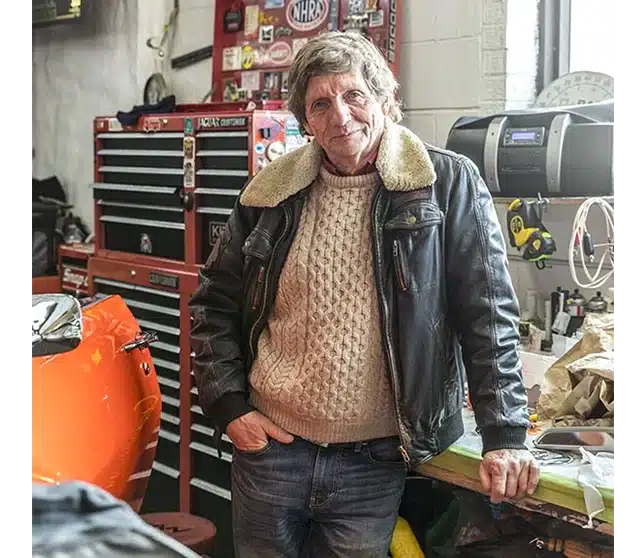
There was debate about whether the Bugatti Aerolithe was supercharged.
However, the dedicated team eventually came to the conclusion that its inline-eight was naturally aspirated.
The Bugatti Aerolithe replica took a full 10 years of research, discussions about modern tributes over accuracy, and building to complete.
For historical accuracy, there are no windows that wind up and down, ventilation or windshield wipers, and its max speed is 64km/h (40mph).
“As cars go, this isn’t the most usable car in the world,” said Grainger.
“But as art goes it’s an absolute masterpiece.”
Worth in excess of $5 million, it’s now being sent to its lucky owner, although it’s unclear if or when the Bugatti Aerolithe will ever be on public display.
But it’s hoped that the mysterious classic model doesn’t disappear entirely again.
DISCOVER SBX CARS: The global premium car auction platform powered by Supercar Blondie
All Supercar Blondie contributors undergo editorial review and fact-checking to ensure accuracy and authority in automotive journalism. After gaining her BA Hons in French and English at the University of Nottingham, Amelia embarked on a vocational diploma from the National Council for the Training of Journalists (NCTJ). This led to numerous opportunities, from interning at Vogue to being on the small team that launched Women’s Health magazine in the UK, which was named the PPA Consumer magazine of the year for three years running. As Health, Beauty and Fitness editor, Amelia personally received a Johnson & Johnson Award and was shortlisted for both PPA and BSME titles. Since then, Amelia has created content for numerous titles and brands, including the Telegraph, 111 Skin, Waitrose, Red magazine, Stylist, and Elle, as well as being Head of Content at Vitality and Editor in Chief at INLondon magazine. “My superpower is translating technical jargon about the mechanical workings of a supercar into a relatable story you’ll want to share with your friends after you’ve read it.” After joining the SB Media family as a senior journalist in September of 2023, Amelia’s role has evolved to see her heading up the SEO output of the editorial team. From researching the most ‘Google-able’ key terms to producing evergreen content - it’s been a time of hard work, growth, and success for the editorial team and the Supercar Blondie website. “I like to think of myself as a ‘method journalist’. In other words: I live and breathe whatever I am writing about. When writing about fitness, I trained as a personal trainer, and as a beauty editor, I completed an ‘expert’ in scent diploma with the Fragrance Foundation. “During my tenure at Supercar Blondie, however, I did something I never thought possible: I passed my driving test at the age of 36. One day I’d love to train as a mechanic to better understand what happens under the hood, too. “My sweet spot is providing readers with a ‘takeaway’ (read: something new they didn’t know before) after reading every one of my stories. While I don’t claim to be an expert in the automotive world, I know the experts and bodies in the field to rely on to provide our readers with an informative and thought-provoking story every time they visit the site.”
